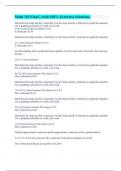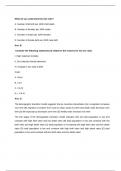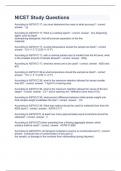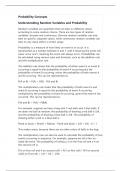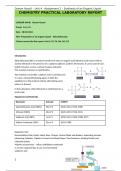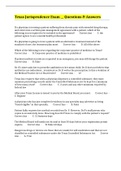Waves
Generalities
Basics
A wave is the means by which information about a
disturbance in one place is carried to another without
bulk translation of the intervening medium.
To derive the wave equation, proceed as follows:
o Consider a wave travelling in the positive x
direction such that at t = 0, the function f(x)
describes the shape of the wave, such that
y(x , 0) = f (x )
o After time t has elapsed, the wave will have
moved a distance vt to the right (where v is
the velocity of the wave). As such
y(x , t ) = f (x - vt ) = y(x - vt, 0)
o If we let u = x – vt, then we have
y(x , t ) = f (u )
And by the chain rule
¶y ¶y ¶u df
= =
¶x ¶u ¶x du
2
¶y ¶ æç ¶y ö÷ ¶u d2 f
= ç ÷ =
¶x 2 ¶y è ¶x ø÷ ¶x du 2
Similarly:
¶y ¶y ¶u df
= = -v
¶t ¶u ¶t du
2 2
¶y df
2 = v2 2
¶t du
o Equating our terms for d f / du 2 :
2
¶2y 1 ¶2 y
=
¶x 2 v 2 ¶t 2
Important notes on the wave equation:
o It applies to any sort of wave motion, of any
form – we have not specified the form of f.
Physics Revision Notes © Daniel Guetta, 2007
, Page 2 of 16
o It is linear in y , which means that the
principle of superposition applies.
In general, we consider harmonic waves. Any other
waveform can be Fourier analysed into a number of
such harmonic waves. Harmonic waves take the form
y(x , t ) = A Re (e i(wt -kx ) )
Where (wt - kx ) is the phase of the wave, and
w 2p
k= =
vp l
Each of the two parts of this equality arise as follows:
o k is the rate at which the phase changes with
position. w is the rate at which the phase
changes with time, and vp is the rate at which it
moves with time. The first equality follows.
o At fixed time t, the phase of the wave changes
by 2p when the distance changes by l – the
second equality follows.
And
w = 2pn
Polarisation
In transverse waves, the displacement of the medium
is perpendicular to the direction of motion of the
wave. There are therefore two orthogonal directions
along which the displacement can take place. The
amplitude and polarisation of the waves along these
two directions define the polarisation of the wave.
Consider a wave travelling in the z direction. The x
and y components of the wave take the form
yy = Aye i (wt -kz )
yx = Axe i (wt -kz +f )
The wave can then be polarised in a number of ways.
Physics Revision Notes © Daniel Guetta, 2007
, Page 3 of 16
Linear polarisation – every point on the string
oscillates parallel to a given line. We have:
o f = 0 or an integer multiple of p .
o The wave oscillates with amplitude
A = Ax2 + Ay2 at an angle arctan (Ay / Ax ) to
the x axis.
Circular polarisation – sometimes, the
displacement will follow a circular path in the x-y
plane. For this to happen,
o f = p /2
o Ax = Ay
Elliptical polarisation – this is the most general
way a wave can be polarised, for any parameters. The
displacement follows an elliptical path in the x-y
plane, as follows:
yy Ax
Ay
a yx
Where
2Ay Ax cos f
tan 2a =
Ay2 + Ax2
Impedance
The concept of wave impedance is used to define the
relationship between the force and the wave response:
driving force
Impedance =
velocity response
It is extremely important to note that the velocity
response is the rate of change of displacement in the
medium, not the speed of propagation of the wave.
The power fed into a wave is given by the product of
the driving force and velocity response. As such
Physics Revision Notes © Daniel Guetta, 2007

